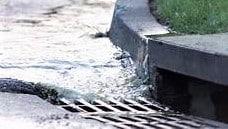SWMP Simplified: A Beginner’s Blueprint
Intro
Creating an effective Stormwater Management Plan (SWMP) can seem daunting, especially for those new to the concept. With the increasing emphasis on environmental sustainability and regulatory compliance, understanding the ins and outs of stormwater management is more critical than ever. Whether you’re in California, Texas, New York, or any other state, the basic principles of creating an SWMP remain the same, though specifics may vary based on local regulations and climatic conditions. This guide aims to simplify the process, offering a beginner-friendly blueprint to develop an SWMP that meets regulatory requirements and supports environmental conservation efforts.
Understanding the Basics of Stormwater Management
Stormwater management is an essential practice aimed at controlling and optimizing the flow of rainwater and snowmelt on surfaces across urban and suburban areas. It addresses the challenges that arise when natural landscapes, traditionally capable of absorbing water, are replaced with impervious surfaces like roads, buildings, and other structures. This shift significantly increases runoff volumes, speeds up water flow, and exacerbates the risks of flooding, erosion, and water pollution. The focus of the SWMP is to describe how the MS4 will reduce the discharge of pollutants from its sewer system.
The core of stormwater management lies in intercepting this runoff before it causes harm, treating it as both a resource and a potential threat. Techniques involved range from infrastructural developments like catch basins and retention ponds to eco-friendly solutions such as green roofs and bioswales. These methods serve to detain, infiltrate, and purify stormwater, closely mimicking the natural hydrological cycle disrupted by urban development.

The ultimate goal is to mitigate the adverse effects of urban runoff, safeguarding water quality and promoting the health of aquatic ecosystems. Effectively managing stormwater not only addresses immediate environmental concerns but also contributes to the long-term resilience and sustainability of communities. By understanding these fundamental aspects, stakeholders can better appreciate the intricacies of devising a Stormwater Management Plan (SWMP) that is both efficient and environmentally responsible.
Identifying the Scope and Goals of Your SWMP
According to the Stormwater Training Center, the foundational step in devising a Stormwater Management Plan (SWMP) requires pinpointing precisely what you intend to achieve through the initiative. Goals can span a wide spectrum, from ensuring adherence to state-specific regulations, like those governing a Stormwater Management Plan in Minnesota or Michigan, to setting ambitious environmental sustainability targets. It’s crucial to delineate whether the plan’s purpose leans more towards regulatory compliance, like meeting the stringent requirements of Stormwater Management Plan California, or if it’s primarily aimed at enhancing water quality and reducing flood risks in a particular locality.

Equally important is defining the plan’s scope. This involves a detailed understanding of the project area—its size, the nature of land use, and the extent of impervious surfaces present. Furthermore, considering the variances in climate and rainfall patterns across states, the scope might need to be tailored to fit specific regional needs, from the arid conditions in Stormwater Management Plan New Mexico to the wetter climates in Stormwater Management Plan Washington.
Setting clear, achievable objectives at the outset will streamline the planning process, ensuring that subsequent steps, from conducting a comprehensive site assessment to selecting the most appropriate stormwater management practices, are aligned with these initial goals. Whether the focus is on mitigating pollution in densely populated urban centers or addressing agricultural runoff in rural areas, establishing a well-defined scope and targeted goals is paramount. This strategic clarity will serve as the backbone of your SWMP, guiding every decision and action towards a cohesive and effective stormwater management strategy.
Conducting a Site Assessment for Effective Planning
The MS4 Stormwater Management Program (SWMP) must address the Six Minimum Control Measures.
To lay the groundwork for a successful Stormwater Management Plan (SWMP), conducting a thorough site assessment is a critical initial step. This process begins with a detailed examination of the physical and environmental characteristics of the project area. Key elements to be scrutinized include the existing drainage patterns, the type and condition of soil, prevalent vegetation types, and the distribution and types of water bodies within and adjacent to the site. By understanding the natural flow of water across the terrain, planners can pinpoint areas that are most vulnerable to issues like erosion and pollutant accumulation.
Furthermore, the site assessment must consider human activities and their impact on stormwater dynamics. This involves mapping out impervious surfaces such as pavements and buildings that contribute to runoff, as well as areas of construction or other land disturbances. Recognizing these factors is essential for identifying potential sources of contamination and areas that require special attention in the stormwater management strategy.
Another critical aspect of the site assessment is evaluating the current infrastructure related to stormwater management, such as sewers, culverts, and existing detention facilities. This evaluation will highlight the strengths and weaknesses of the current system and identify opportunities for improvement or retrofitting with more efficient or eco-friendly options.
Gathering this comprehensive suite of data requires a combination of field observations, historical data review, and possibly geotechnical testing, depending on the complexity of the site. By meticulously cataloging these details, stakeholders ensure that the chosen stormwater management practices are not only tailored to the specific needs of the area but also integrated seamlessly with the natural and built environment, paving the way for a resilient and sustainable stormwater management plan.
Choosing the Right Stormwater Management Practices
The selection process for stormwater management practices is pivotal, heavily influenced by insights gathered from your site assessment and aligned with both the overarching goals of your SWMP and the specific regulatory landscape of your region—be it Stormwater Management Plan Colorado or Stormwater Management Plan Ohio.
Among the array of options, green infrastructure stands out for its dual benefit of efficacy and environmental enhancement. Techniques such as rain gardens, green roofs, and permeable pavements not only manage stormwater but also contribute to urban beautification and biodiversity. On the other hand, traditional structural interventions like detention basins, stormwater ponds, and underground storage systems offer robust solutions for high runoff volumes, particularly in areas with significant impervious surfaces.

The decision-making process should incorporate a consideration of the unique environmental and urban characteristics of your area. For instance, regions prone to heavy rainfall might benefit more from large-scale detention facilities, whereas areas with space constraints could look towards green infrastructure for a solution. Additionally, the integration of multiple practices, often referred to as a treatment train, can enhance the effectiveness of your SWMP by addressing various aspects of stormwater management—from quantity reduction to quality improvement.
Engagement with local authorities and stakeholders during this phase is crucial. Their input can provide valuable insights into local preferences, historical issues, and success stories that can inform the selection of practices. By carefully evaluating the potential impact, cost-effectiveness, and feasibility of each option within the context of your specific objectives and constraints, you can craft a suite of stormwater management practices that not only meet regulatory requirements but also fortify your community against water-related challenges.
Integrating Public Education and Participation
Engaging the community in stormwater management initiatives is crucial for the success and sustainability of your SWMP. Active public involvement not only elevates the plan’s acceptance but also promotes environmental consciousness within the community. Organizing educational workshops and seminars can enlighten residents about the importance of stormwater management and the role they play in reducing pollution and managing runoff. Schools and local organizations can be pivotal in disseminating information, making stormwater management a community-wide effort.
Creating interactive platforms where community members can voice concerns, offer suggestions, and share personal experiences related to stormwater issues fosters a sense of ownership and responsibility. Such platforms can range from social media groups to town hall meetings. Additionally, implementing citizen science projects, such as rain gauge monitoring or stream clean-ups, can provide invaluable hands-on experiences that underscore the tangible benefits of effective stormwater management.
Encouraging local businesses and homeowners to adopt stormwater-friendly practices, like installing rain barrels or creating rain gardens, can further amplify the impact of the SWMP. Recognition programs for those who contribute significantly to stormwater management efforts can also motivate broader community participation.
By weaving public education and participation into the fabric of your stormwater management plan, you not only enhance its efficacy but also cultivate a culture of environmental stewardship. This collective approach ensures that stormwater management becomes a shared responsibility, rooted deeply within the community ethos.
Navigating Regulatory Compliance and Permitting
Navigating the complex landscape of regulatory compliance and securing the necessary permits for your SWMP is a critical step that requires meticulous attention to detail and an understanding of the legal framework governing stormwater management in your jurisdiction. Each state, and often each locality within a state, has its own set of rules and regulations that dictate the development and implementation of Stormwater Management Plans. For instance, the specifics of a Stormwater Management Plan in Florida may differ considerably from those required in California or Ohio, reflecting variations in environmental priorities, climate, and water management challenges.
To effectively address this aspect of SWMP development, it’s imperative to engage with relevant environmental agencies early in the planning process. This engagement can provide clarity on the specific permits needed, the criteria for stormwater management practices, and the benchmarks for compliance. Agencies may require detailed documentation of your proposed stormwater management measures, including engineering designs, impact assessments, and mitigation strategies for potential environmental harm.
Furthermore, aligning your SWMP with broader water quality initiatives at the federal level, such as those mandated by the Environmental Protection Agency (EPA), can help streamline the compliance process. This alignment ensures that your plan not only meets local and state regulations but also contributes to national objectives for water resource protection.
Staying abreast of changes in regulations is also crucial, as updates may necessitate adjustments to your SWMP. Establishing a regular review schedule for regulatory compliance can prevent potential legal challenges and ensure that your stormwater management efforts remain effective and lawful over time. Engaging legal expertise or consulting with stormwater management professionals can provide additional support in navigating these complex requirements, ensuring that your plan adheres to all applicable laws and regulations.
Developing an Implementation Strategy
Crafting a comprehensive implementation strategy for your Stormwater Management Plan (SWMP) is a pivotal phase that transitions your project from conceptualization to action. This strategy should encompass a detailed timeline that outlines key milestones and deadlines, ensuring each phase of the SWMP unfolds smoothly and efficiently. Equally important is establishing a realistic budget that accounts for all expenses associated with the plan’s execution, including construction, landscaping, maintenance, and monitoring costs. The City’s Public Works Director is responsible for the overall development and implementation of the Stormwater Management Program (SWMP).
According to The Stormwater Training Center, Public Works Directors have a choice when developing their Stormwater Management Plan (SWMP)
1. The municipality can hire an outside company to develop the SWMP.
2. The Public Works Director and / or employees can learn how to develop the SWMP themselves. These online courses are usually conducted online by several companies, including the Stormwater Training Center.
In either case, a clear delineation of roles and responsibilities is essential to foster accountability and streamline workflows among the team members involved in the SWMP’s implementation. Identifying who is responsible for each task, from overseeing construction activities to conducting post-implementation monitoring, ensures that all aspects of the plan are executed to the highest standards.
Anticipating potential challenges and obstacles is also crucial in this stage. Whether it’s unforeseen environmental conditions, budgetary constraints, or delays in securing necessary permits, having contingency plans in place can mitigate these risks and keep the project on track.
Engagement with stakeholders should not be overlooked during implementation. Regular updates and consultations with community members, local authorities, and environmental agencies can facilitate smooth execution and foster support for the project.
Finally, employing effective project management techniques will be instrumental in coordinating tasks, managing resources, and adhering to the implementation timeline. Utilizing tools such as Gantt charts or project management software can help maintain oversight of the project’s progress and ensure that your SWMP is implemented successfully and sustainably.
Monitoring, Maintenance, and Continuous Improvement
Ensuring the longevity and efficiency of your Stormwater Management Plan (SWMP) hinges on diligent monitoring and consistent maintenance practices. This phase demands a proactive approach, involving regular evaluations to track the performance of implemented stormwater management measures. Such assessments help in identifying any deviations from expected outcomes, enabling timely interventions to rectify issues. Maintenance tasks, from clearing debris in drainage systems to repairing damaged infrastructure, are critical to prevent system failures and ensure optimal operation.

Beyond these foundational activities, the concept of continuous improvement plays a pivotal role in the evolution of your SWMP. This involves leveraging the insights gained from ongoing monitoring efforts to refine and enhance stormwater management strategies. Adapting to new technological advancements, responding to observed environmental changes, and incorporating community feedback are integral to this process. This dynamic approach allows for the iterative optimization of practices, ensuring that the SWMP remains effective in the face of changing conditions and emerging challenges.
Establishing a structured schedule for monitoring and maintenance activities, coupled with a mechanism for regularly reviewing and updating the SWMP, facilitates this continuous improvement cycle. Engaging with stakeholders, from local residents to environmental experts, provides additional perspectives that can enrich the plan’s evolution. By prioritizing these elements, your SWMP will not only maintain its relevance and efficacy but also contribute to the broader goals of sustainable stormwater management and environmental stewardship.

